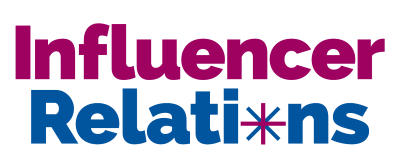The closure of Gigaom on the same day as the surprise announcement of an alliance between two high-growth analyst firms shows the high stakes in the analyst industry. Freelance analysts and bloggers found a powerful ally in Gigaom and, like the DCG-Constellation alliance, it gave IT professionals the ability to access insight from multiple sources through one service. Let’s compare these two stories.
We think the demand-side should be positive about Constellation Research’s strategic alliance with Digital Clarity Group. These are two firms that have momentum, are punching above their weight and are concerned with the digital transformation of business. Constellation views these changes more from the view of technology innovators while DCG has more of the attention of CxOs who are neither CIOs or CTOs.
These are two different boutiques with contrasting business models. The alliance is a challenge because neither of the firms is set up to sell to the demand-side (those who buy ICT solutions) on a large scale. The business world is just so much greater than the ICT supplier community, and thus analyst firms need a different selling style and buying process. Constellation has been focussed more on broadening its commercial reach while DCG’s focus has been on building deeper relationships with smaller numbers of clients. Their relatively modest scale means that some customers either don’t come across them or are not brave enough to use them. The impact of the announcement is unclear and could amount to little more than a press release.
On paper, there could be some very interesting research and events that draw the two firms together. Putting their high-end CMO and CIO audiences together could be significant. Constellation claims over 200 demand-side customers, naturally producing less revenue and fewer users than its vendor clients. In contrast, DCG’s freemium model gives it both a wider audience and paid engagements that are deeper than Constellation’s inquiry-led model. Working together could allow either firm to offer a different value proposition to the end-user market. DCG had prepared well because Connie Moore previously managed Constellation founder R “Ray” Wang when they both worked at Forrester, and they are close to hiring a remarkable business development leader.
While the firms describe this as a strategic alliance, this is certainly not a prelude to a marriage. The firms are not cross-selling each others’ services, rebranding or co-authoring research, sharing revenues or exchanging stock.
DCG is acquiring top talent in the analyst industry, and some of those would be concerned about Constellation’s controversies. Constellation’s high profile with the supply-side could raise the profile of DCG as well. Furthermore, Constellation’s superior business development process will be amplified by Ray’s upcoming HBR book. That means that the two firms will need to act consciously to ensure that the alliance boosts DCG’s profile as much as Constellation’s subscription revenue.
That subscription model means that Constellation gains if it can give its clients more events, better access to more analysts and their research. DCG has both, and its insightful (and often profound) research methods mean that Constellation can feel comfortable when putting DCG’s analysis and analysts in front of its clients. Yankee had similar advantages with its affiliate network. That benefits DCG too since it increases both firms’ ‘bench strength’: the number of analysts available to serve clients expands to include the other firm’s analysts.
But this potential is what brings us to Gigaom. Although Gigaom was established as blog and news outlet, its Gigaom Pro research arm offered paid-for analyst services and was gathering a real audience, even in the expert users who took the Analyst Value Survey. It’s worth looking at what that survey has to tell us about Gigaom. Although it was not always noted for its independence, no-one could doubt its ability to spread its ideas. Because it has a freemium model, it had more demand-side users and was mentioned more by buyers than Constellation Research. Interestingly, it had more paid clients on the demand-side than Constellation, and roughly the same as Digital Clarity Group. Like all of these firms, its users were heavily concentrated in North America.
Gigaom was closed by trustee Silicon Valley Bank because it could not pay its bills. That, however, conceals two ‘real’ reasons the declining value of web advertising. Unlike consumer websites, which can boost awareness
First, the value of web advertising is declining. Customer-oriented sites can promote brand awareness within large audiences. However, business-oriented channels with focused audiences can only work with freemium models if they are delivering leads. Gigaom did not do that in a cost-effective way. Unlike ads on many consumer websites, even well-crafted native ads struggled to compete with the high-quality B2B content. Gigaom needed to invest more in selling events and premium services.
Second, Gigaom depended on venture capital and owed investors $22 million. Few news businesses can generate the sort of returns that VCs require. As we saw with SageCircle a decade ago, investors are decisive and won’t always have patience.
For all of the firms mentioned, marketing in its broadest sense is the key to survival and growth. More research, more capacity, and more speakers are not harmful, but neither do they clearly meet concrete customer needs. That requires the sort of profound insight into demand-side concerns that Forrester has developed through its role-based research. If DCG and Constellation can raise up the ability of their research to meet concrete and current business problems and to add a second stream to their business development, then this alliance can flourish.


[…] This post originally appeared on InfluencerRelations.com. […]
[…] What Gigaom’s closure means for DCG/Constellation alliance […]
[…] Digital Clarity Group rounds out the top five. DCG’s is highly rated for its advisory services and influence on purchasing. […]
[…] Digital Clarity Group has held on to its place in the top ten, impressively for a firm its size. Advisory days remain a strong point, as are delivering business leads and purchasing recommendations. However, research, events and inquiry calls are still too weak. […]